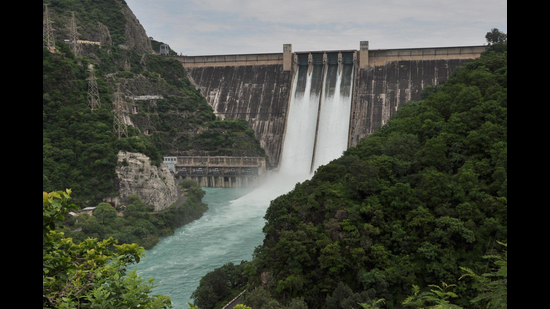Share, not fight over, the rivers
Punjab and Haryana must get realistic about availability and be sensitive to each other’s needs
The dispute between Punjab and Haryana over the sharing of water dates to 1966, when the erstwhile Punjab state was bifurcated to form Haryana. Since then, it has roiled the region and defied numerous attempts to reconcile the demands of both the states – Rajasthan and Delhi also have a stake in the dispute. This time, with farmers preparing for the kharif (summer) paddy crop, tempers are rising. Haryana has demanded 8,500 cusecs of water, which it claims is its share of Beas-Sutlej flow, from the Bhakra Beas Management Board (BBMB), a central body with representatives from states that monitor water availability and its release. Punjab has opposed Haryana’s demand on the ground that the latter has already utilised its share.

The current flare-up has a distinct political undercurrent with the Aam Aadmi Party government in Punjab and the BJP government in Haryana (also Delhi and Rajasthan) preferring a stand-off rather than a settlement that respects the concerns of all the interested parties. (We saw a similar stand-off between Delhi and Haryana over the Yamuna ahead of the recent assembly polls.) Political parties in Punjab and Haryana need to be cautious while turning water into an emotional issue considering its troublesome legacy, especially in the making of the separatist narrative in Punjab. The Sutlej-Yamuna-Link (SYL) canal, proposed first in 1976, is still in limbo despite extended negotiations, arbitration (Justice V Balakrishna Eradi tribunal), and legal directives. In the present case, the BBMB, as the competent authority, should have the final say and all parties must listen to its decisions. The Board, which has said there is enough water in the three main storage dams, namely Bhakra, Pong and Ranjit Sagar over Sutlej, Beas and Ravi rivers respectively, has now been politicized with Punjab’s representative replaced following his dissent over releasing water to Haryana. Punjab held an all-party meeting over the issue Friday and a special session of the legislative assembly has been convened for Monday. The Centre needs to play the role of an independent mediator here, keeping politics out of water sharing; it must convince all stakeholders to return to the drawing board, dispassionately look at the data, and agree to share the water.
In the long-run, though, water-sharing will remain a major point of contention between Punjab, Haryana, Rajasthan, Himachal Pradesh and Delhi unless there is a serious assessment of the long-term needs, resource availability, storage and transfer infrastructure, and mitigation measures (for both dry and wet seasons). The climate crisis is already wreaking havoc at the sources of the Sutlej, which originates in the Kailash-Manasarovar watershed, Beas, and Ravi. The recent reports of low snow prevalence in the Himalayas -- this has major repercussions for the summer flow since snow melt is a major component – is a sign of things to come. Ironically, water-sharing in the Beas-Sutlej-Ravi basin is based on a 1981 award, drawing on dated data, cited by Punjab to press its case that it has no water to divert to SYL. Better data should help in getting a hang of what is in store in the future and the necessary mitigation.
Water is an emotional issue in Punjab and Haryana since these rain-deficit states are dependent on agriculture, and ironically, paddy and wheat. Both states make up the spine of India’s food security programme, but the larger question is whether these water-intensive crops should be promoted in Punjab and Haryana (In Punjab, paddy is cultivated over 3 million hectares and Haryana grows the crop over 1.6 million hectares). Both states are witnessing a drop in subsoil water levels, increasing the dependence on canal water. While the immediate goal is to lower inter-state tensions, the need to plan for long-term contingencies should not be forgotten.
All Access.
One Subscription.
Get 360° coverage—from daily headlines
to 100 year archives.



HT App & Website






